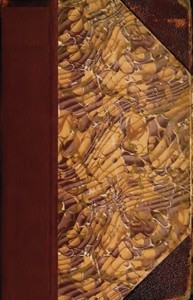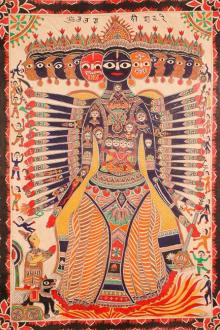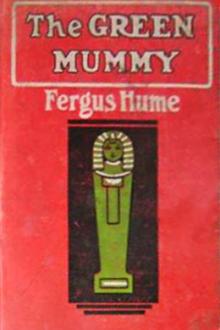The Fortunes of Nigel, Walter Scott [if you liked this book .TXT] 📗

- Author: Walter Scott
Book online «The Fortunes of Nigel, Walter Scott [if you liked this book .TXT] 📗». Author Walter Scott
The dispute terminates in the scuffle, which is the subject of the poem. The whole may be found in the second edition of Dryden's Miscellany, 12mo, vol. iii. 1716.
Note XIV. p. 150.—BURBAGE
Burbage, whom Camden terms another Roscius, was probably the original representative of Richard III., and seems to have been early almost identified with his prototype. Bishop Corbet, in his Iter Boreale, tells us that mine host of Market Bosworth was full of ale and history.
“Hear him, See you yon wood? there Richard lay With his whole army; look the other way, And lo, where Richmond, in a field of gorse, Encamp'd himself in might and all his force. Upon this hill they met. Why, he could tell The inch where Richmond stood, where Richard fell; Besides, what of his knowledge he could say, He had authentic notice from the play, Which I might guess by's mustering up the ghosts And policies not incident to hosts; But chiefly by that one perspicuous thing, Where he mistook a player for a king, For when he would have said, that Richard died, And call'd, a horse! a horse! he Burbage cried.” RICHARD CORBET'S Poems, Edition 1815, p. 193.Note XV. p. 323.—MHIC-ALLASTAR-MORE
This is the Highland patronymic of the late gallant Chief of Glengarry. The allusion in the text is to an unnecessary alarm taken by some lady, at the ceremonial of the coronation of George IV., at the sight of the pistols which the Chief wore as a part of his Highland dress. The circumstance produced some confusion, which was talked of at the time. All who knew Glengarry (and the author knew him well) were aware that his principles were of devoted loyalty to the person of his sovereign.
Note XVI. p. 323.—KING JAMES'S HUNTING BOTTLE
Roger Coke, in his Detection of the Court and State of England, London, 1697, p.70, observes of James I., “The king was excessively addicted to hunting, and drinking, not ordinary French and Spanish wines, but strong Greek wines, and thought he would compound his hunting with these wines; and to that purpose, he was attended by a special officer, who was, as much as he could be, always at hand to fill the King's cup in hunting when he called for it. I have heard my father say, that, hunting with the King, after the King had drank of the wine, he also drank of it; and though he was young, and of a healthful disposition, it so deranged his head that it spoiled his pleasure and disordered him for three days after. Whether it was from drinking these wines, or from some other cause, the King became so lazy and so unwieldy, that he was trussed on horseback, and as he was set, so would he ride, without stirring himself in the saddle; nay, when his hat was set upon his head he would not take the trouble to alter it, but it sate as it was put on.”
The trussing, for which the demipique saddle of the day afforded particular facility, is alluded to in the text; and the author, among other nickcnacks of antiquity, possesses a leathern flask, like those carried by sportsmen, which is labelled, “King James's Hunting Bottle,” with what authenticity is uncertain. Coke seems to have exaggerated the King's taste for the bottle. Welldon says James was not intemperate in his drinking; “However, in his old age, Buckingham's jovial suppers, when he had any turn to do with him, made him sometimes overtaken, which he would the next day remember, and repent with tears. It is true he drank very often, which was rather out of a custom than any delight; and his drinks were of that kind for strength, as Frontiniack, Canary, high country wine, tent wine, and Scottish ale, that had he not had a very strong brain, he might have been daily overtaken, though he seldom drank at any one time above four spoonfuls, many times not above one or two.”—Secret History of King James, vol. ii., p. 3. Edin. 1811.
Note XVII. p. 325.—SCENE IN GREENWICH PARK
I cannot here omit mentioning, that a painting of the old school is in existence, having a remarkable resemblance to the scene described in the foregoing chapter, although it be nevertheless true that the similarity is in all respects casual, and that the author knew not of the existence of the painting till it was sold, amongst others, with the following description attached to it in a well-drawn-up catalogue:
“FREDERIGO ZUCCHERO “Scene as represented in the Fortunes of Nigel, by Frederigo Zucchero, the King's painter.“This extraordinary picture, which, independent of its pictorial merit, has been esteemed a great literary curiosity, represents most faithfully the meeting, in Greenwich Park, between King James and Nigel Oliphaunt, as described in the Fortunes of Nigel, showing that the author must have taken the anecdote from authenticated facts. In the centre of the picture sits King James on horseback, very erect and stiffly. Between the King and Prince Charles, who is on the left of the picture, the Duke of Buckingham is represented riding a black horse, and pointing eagerly towards the culprit, Nigel Olifaunt, who is standing on the right side of the picture. He grasps with his right hand a gun, or crossbow, and looks angrily towards the King, who seems somewhat confused and alarmed. Behind Nigel, his servant is restraining two dogs which are barking fiercely. Nigel and his servant are both clothed in red, the livery of the Oliphaunt family in which, to this day, the town-officers of Perth are clothed, there being an old charter, granting to the Oliphaunt family, the privilege of dressing the public officers of Perth in their livery. The Duke of Buckingham is in all respects equal in magnificence of dress to the King or the Prince. The only difference that is marked between him and royalty is, that his head is uncovered. The King and the Prince wear their hats. In Letitia Aikin's Memoirs of the Reign of King James, will be found a letter from Sir Thomas Howard to Lord L. Harrington, in which he recommends the latter to come to court, mentioning that his Majesty has spoken favourably of him. He then proceeds to give him some advice, by which he is likely to find favour in the King's eyes. He tells him to wear a bushy ruff, well starched; and after various other directions as to his dress, he concludes, 'but above all things fail not to praise the roan jennet whereon the King doth daily ride.' In this picture King James is represented on the identical roan jennet. In the background of the picture are seen two or three suspicious-looking figures, as if watching the success of some plot. These may have been put in by the painter, to flatter the King, by making it be supposed that he had actually escaped, or successfully combated, some serious plot. The King is attended by a numerous band of courtiers and attendants, all of whom seem moving forward to arrest the defaulter. The painting of this picture is extremely good, but the drawing is very Gothic, and there is no attempt at the keeping of perspective. The picture is very dark and obscure, which considerably adds to the interest of the scene.”
Note XVIII. p. 325.—KING JAMES'S TIMIDITY
The fears of James for his personal safety were often excited without serious grounds. On one occasion, having been induced to visit a





Comments (0)